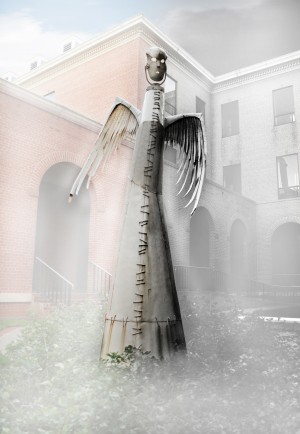
Matt Hellman | Lariat Multimedia Editor
Staff Writer
Halloween as we know it today is a chance for children to play dress-up and obtain copious amounts of candy. Therefore, it may surprise some people that this light-hearted holiday originated from ancient religious practices.
Dr. Joe Coker, lecturer of religion, said Celtic traditions were brought to America in the 1800s with the arrival of Scottish immigrants. Over time, aspects of the Celtic tradition mixed with aspects of English religious practices and resulted in contemporary Halloween.
The history of Halloween is complex, Coker said, derived from no single tradition.
“All of these traditions add to the celebration of other-worldly, spooky stuff,” Coker said.
The spooky origins of Halloween emerged from an ancient Celtic festival called Samhain. On Oct. 31, the Celts believed demons and ghosts of the deceased would rise from the underworld, according to “Halloween: An American Holiday, An American History.”
To escape harm, the Celts disguised themselves as the demonic beings whom they were afraid of. This is where modern-day Halloween derives its costume element, said Dr. Michael Foley, associate professor of patristics in the Honors College.
“They followed the principle ‘If you can’t beat them, join them,’” Foley said.
According to “Halloween: An American Holiday, An American History,” the Celts believed that not all the spirits of Samhain were evil.
The Celts made offerings of food and wine in hopes that the spirits of their loved ones would return for a visit.
Celtic communities also made bonfires because they believed the sun was weak during the winter.
They sacrificed animals and made predictions about the future based on the entrails. Humans might have been sacrificed too, according to “Halloween: An American Holiday, An American History.” Cats were also burned in wicker cages. This might explain where Halloween developed its iconography of cats and fire.
When Catholicism entered the Celtic lands, church leaders tried to navigate the Celts away from their pagan practices, Foley said. It just so happened that All Saints Day, a pre-existing Catholic tradition, was the day after Samhain. As a result, church officials were able to conveniently transform Samhain into All Hallow’s Eve.
Coker said church officials tried to “Christianize” Samhain.
“It worked well because Catholics in Ireland were able to take advantage of the coincidence and steer the Celtic tradition away from unpleasantry,” Foley said.
From All Hallow’s Eve, the modern-day concept of trick-or-treating emerged. Called “souling,” the poor would go from door to door begging for soul cakes, and in return, they promised to pray for those who were deceased in the donor’s family.
“It used to be that you only gave soul cakes to the poor,” Foley said. “But then everyone started doing it. It became a social thing.”
After the Protestant Reformation, Catholics had to practice these traditions secretly for fear of religious persecution, Foley said.
English Protestants at this time began celebrating Guy Fawkes Day on Nov. 5.
According to “Halloween: An American History, An American Holiday,” a Catholic revolutionary named Guy Fawkes was involved in the 1605 Gunpowder Plot to blow up the British parliament and protestant-sympathetic House of Lords.
Foley said, however, he does not believe Fawkes’sactions were a part of a deliberate political agenda.
“They said that this was a Catholic plot to overthrow parliament, but it wasn’t,” Foley said. “He was just crazy.”
Whatever Fawkes’s true motives were, he gave Protestants a reason to detest and ridicule Catholicism, Foley said.
On Guy Fawkes Day, boys went door to door asking for coals, which they used to burn down effigies of Guy Fawkes and the pope. Those who denied the boys coals were to expect some sort of prank, hence the “trick” part of trick-or-treat.
“The modern American custom of trick or treating is combination of old Irish-Catholic Halloween and anti-Catholic British Guy Fawkes Day,” Foley said.
People wore Guy Fawkes masks on Guy Fawkes Day, Foley said, a phenomenon that probably further contributed to the masquerade aspect of modern-day Halloween.
Foley said nowadays, of course, when kids wear masks or ghoul costumes, it bears no religious significance.






